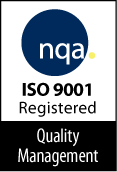An IRT system with a robust drug management and data integration function is a crucial component to any clinical trial. Here are some of the benefits of common IRT integrations.
When Interactive Response Technology (IRT) integrates with other software systems, you have the ability to seamlessly access important data from other sources and better leverage the tools at your disposal. This integration is especially important when managing a data-heavy system with a limited or complex drug supply. Effective integration of high quality solutions will help you get the right drug to the right patient right now, avoiding costly delays and errors.
An effective IRT solution can manage large amounts of data with relative ease. It can provide and receive data points from multiple systems including EDC, CTMS, ERP, LIMS and more. Successful data integration with IRT starts with well-defined requirements. Since IRT databases can store and retrieve almost any simple value, they can be used as effective integrators. Just bear in mind that the integration data needs to make sense for the IRT system design. For example, IRT systems can easily store numerical values and simple character strings, but prose phrases and freeform text are not ideal for integration.
Examples of useful IRT integrations
You can easily leverage a study using calculation on viral load or platinum sensitivity for integration and provide these data points to EDC and safety systems. You can also integrate data from studies that collect lab values, allowing the IRT system to make dosing decisions based on the uploaded data.
When the proper integration is in place, EDC and CTMS can feed subject and site numbers into the IRT system. For CTMS, this can simplify the act of site activation by putting a single platform out front as the interface and allowing the integration to take care of the activation and address updates in the IRT system. EDC can be used in much the same way, by collecting stratifying information that can be loaded into the IRT for randomization purposes.
IRT systems can also be integrated with Enterprise Resource Planning (ERP) systems which are used by some study drug distribution organizations. When integrated with ERP, the IRT’s typical drug management functions are enhanced by allowing automated drug releases, expiry updates, shipment requests and confirmation and cancelation functions. ERP integration decreases cycle time for these activities and removes some of the human intervention that would otherwise be required.
Ideally, your IRT system will integrate with both sponsors and 3rd party eclinical systems. IRT integrations like these allow your team to better leverage the power of its various software solutions and access real-time data to make the best decisions as quickly as possible.
For more information on the benefits of an integrated system, ask us for our whitepaper on the eclipse Right Now Model and learn how it can reduce drug supply costs for your next clinical trial.
OR
Eclipse’s Right Now integrated drug distribution solution helps alleviate storage costs related to warehousing medication, lowers risk to product and saves the sponsor money. For more information, ask us for our Right Now integrated distribution and an On-Demand packaging case study.

